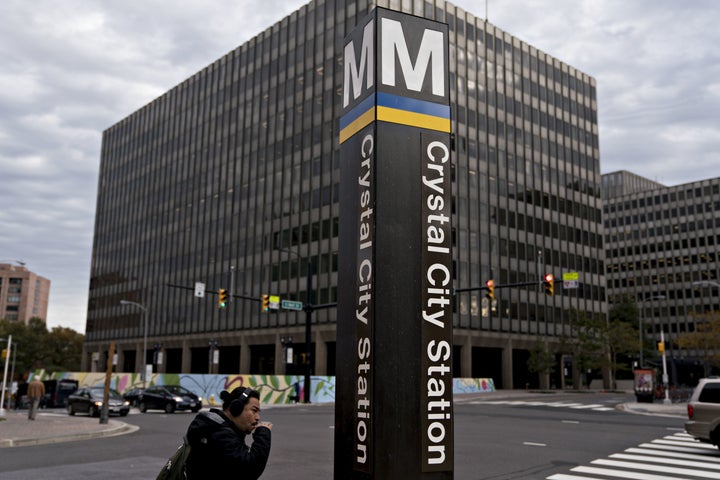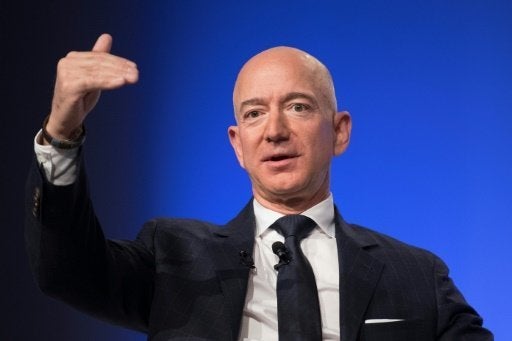After 14 months, two rounds and 238 bids, Amazon finally decided to split its second headquarters between the two most obvious locations imaginable: New York City and Washington, D.C.
The process of identifying the company’s “HQ2” location pitted cities against each other, incentivizing them to offer the largest tax breaks and the most slickly produced marketing campaigns to capture Amazon’s attention. Chicago offered to give highly paid tech workers their state income taxes back to them. Fresno was fine with letting Amazon decide how to distribute its tax revenue. Calgary, Canada, put up banners near the company’s headquarters in Seattle reading, “Hey Amazon, we’re not saying we would fight a bear for you … but we totally would.” In a bizarre inversion of municipal corruption, the city of Tucson sent a 21-foot cactus to Amazon CEO Jeff Bezos ― who announced he was returning it for ethical reasons.
All of these efforts were aimed at landing the big prize: $5 billion in investment and 50,000 new jobs. After the announcement that Long Island City, in the Queens borough, would host half of the new HQ2, New York Mayor Bill de Blasio tweeted, “New York City is about to get tens of thousands of new, good paying jobs and Amazon is about to meet the most talented workforce in the world.” Allison Silberberg, the mayor of Alexandria, Virginia, which will host the other half of HQ2 along with Arlington, said her city’s bid was successful due to “the collective strengths of our communities ― our workforce, education, infrastructure and our unparalleled quality of life ― all of which will be strengthened by this new investment from Amazon.”
Others were less enthusiastic. New York City Council Speaker Corey Johnson said he was excluded from the negotiations with the company and that he was “very concerned” about the details of the subsidy agreement. New York Assemblyman Ron Kim (D) introduced legislation to block the deal and spend the funds forgiving student debt instead. Even before the bids were announced, activists in Pittsburgh, Philadelphia, Chicago and Atlanta demanded city lawmakers release their bids to the public or rescind them altogether.
The year-plus bidding process was a cynical ploy at worst and a huge waste of time at best. After shortlisting proposals from Miss Congeniality candidates Indianapolis and Raleigh, North Carolina, Amazon ultimately chose two large, established American cities that offered millions of educated workers, existing tech clusters and proximity to financial and political capital. Bezos even owns homes in both cities already.
“By using this process, Amazon was able to get cities to offer up bigger and better incentives than they otherwise would have,” said Greg Squires, a George Washington University researcher who studies urban development. Jay Carney, Amazon’s senior vice president of worldwide corporate affairs, made this explicit Tuesday, stating that the talent pool ― i.e., not the tax incentives ― was the primary reason Amazon chose Arlington and Long Island City.
But the implications of Amazon’s announcement go far beyond one company or two cities. The ugliness of the last 14 months highlights a growing challenge for cities and politicians who run them. According to a March 2018 report by the Brookings Institution, state and local governments dole out up to $90 billion worth of subsidies to individual businesses each year. As cities compete to give away more tax revenue and larger incentives to companies, they may lose track of the line between investing in their communities and exploiting them.

Why Do Cities Offer Tax Breaks Anyway?
The entire HQ2 process took place under a series of assumptions with little support in academic research.
“This whole notion of providing financial incentives to businesses has been a losing proposition for most communities that have ever engaged in it,” Squires said. Cities generally end up giving tax breaks to corporations that were going to relocate there anyway. Companies often don’t hire local workers and, if they do, it’s rarely the populations that need jobs the most.
The reason financial incentives are a losing proposition for economic development, Squires said, is that taxes don’t make up a significant cost for companies when compared to other fundamentals, like the cost of utilities, recruitment and supply chains. “If Phoenix is the ideal place for a company to do business,” Squires said, “Detroit isn’t going to get them with a big tax break.”
But even by the standards of tax breaks, the HQ2 process was more crude and ad hoc than usual.
“Everything we know about incentives was just tossed out the window,” said Nathan Jensen, a researcher at the University of Texas at Austin who specializes in state and local development. Some cities were offering 30 years of exemptions on utility and income taxes. Since most companies plan only five to 10 years into the future, these incentives are worth almost nothing. “It has no effect as an enticement,” Jensen said, “but it imposes a massive burden on taxpayers.”
Negotiators also overlooked the social and political effects of financial incentives. The sudden addition of 25,000 jobs can be a disruptive event. It means more kids in schools, more cars on the road, more tenants competing for housing and more pressure on every municipal service from parks to sewers to firefighting. Under normal circumstances, this influx of population is balanced by additional tax revenue. But when cities negotiate the revenue away, it simply shifts the costs of those services onto their residents.
In the long run, this can result in political tensions, disgruntled populations, threats of budget cuts and tensions between the company and the community ― everything, in other words, that has happened in Seattle since Amazon began its aggressive expansion there in 2010. “The winner of this competition may turn out to be a big loser,” Squires said.
So if financial incentives are so bad, why are politicians still offering them? Squires said corporate welfare falls into the gap between the long-term effects of tax breaks and the short-term rewards for politicians. “A mayor can make an announcement or have a ribbon-cutting ceremony, but they won’t be around to see what happens. Plus, if they appease a major employer, it could be easier to raise money next time they run for office.”

Not All Tax Incentives Are Created Equal
But the problem isn’t just the tax breaks Long Island City and Arlington are offering Amazon. It’s how those tax breaks will be applied.
In the news release announcing its decision, Amazon noted that it will receive “performance-based direct incentives” of $1.525 billion in Long Island City and $573 million in Arlington in exchange for creating 50,000 high-paying jobs. The company is also receiving various other forms of state aid and has committed to funding “community infrastructure improvements,” including donating space on its New York campus to a public school.
What isn’t clear, however, is how these commitments will be monitored and which tax incentives can be revoked if Amazon does not live up to its end of the bargain. While the state of Virginia has committed to monitoring the company’s job-creation targets, documents released by New York state so far comprise only a nonbinding memorandum of understanding that appears to include no verification or audit requirements.
“We need sincere third-party evaluations of what has been offered and what the company is giving back,” Jensen said. “That’s the minimum. If the company says it’s going to invest in the community and hire locally, OK fine. Prove it.”
Plus, Jensen said, neither agreement seems to include an evaluation to determine whether the investments of $48,000 per job (New York) and $22,000 per job (Virginia) will bring back more in revenue than what they gave away. It’s a common problem among cities: They believe the promises of companies in advance of a deal but neglect to verify that these commitments are carried out and that the community truly benefited from the arrangement afterward.
There’s also the issue of transparency. Negotiations with Amazon were carried out without the participation of city residents or even politicians. Now that the locations have been announced, the commitments and obligations of the company and various government agencies are still unclear.
“It’s unfortunate so much of this was done in secrecy,” Squires said. “Residents have a right to know how their tax dollars are being used.”
Amazon is unlikely to be the last company to stage a nationwide beauty pageant to get lower tax rates and higher subsidies. In response to this problem, the European Union has made it illegal for its member countries to offer incentives to specific companies. While some poorer regions are still allowed to offer rewards, the process is done within clear limits and with full transparency. The United States has no similar national framework.
What cities should be competing on, Squires said, is amenities that improve communities and invite businesses of all kinds: Improving schools, building infrastructure, keeping libraries open and collecting the garbage every week. If the tax money spent on Amazon had been invested in better subways, subsidized child care or universal early education programs, the states may have created even more jobs than the tech giant ever will.
“Take care of public services,” Squires said, “and the rest will take care of itself.”
CORRECTION: A previous version of this story indicated Allison Silberberg is the mayor of Arlington, Virginia, instead of Alexandria. Due to an editing error, the story also previously indicated Alexandria was in Arlington County.

